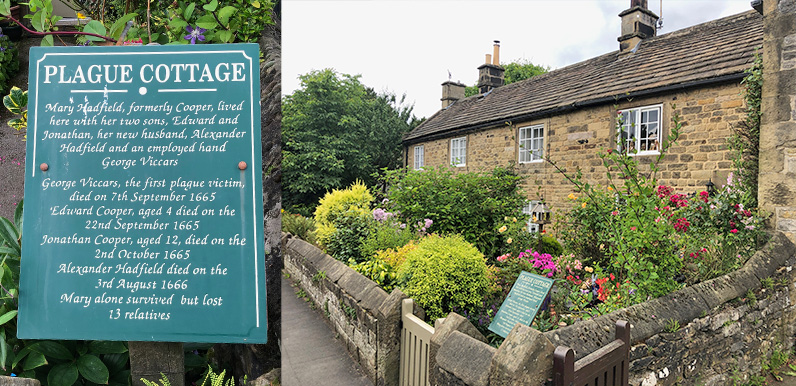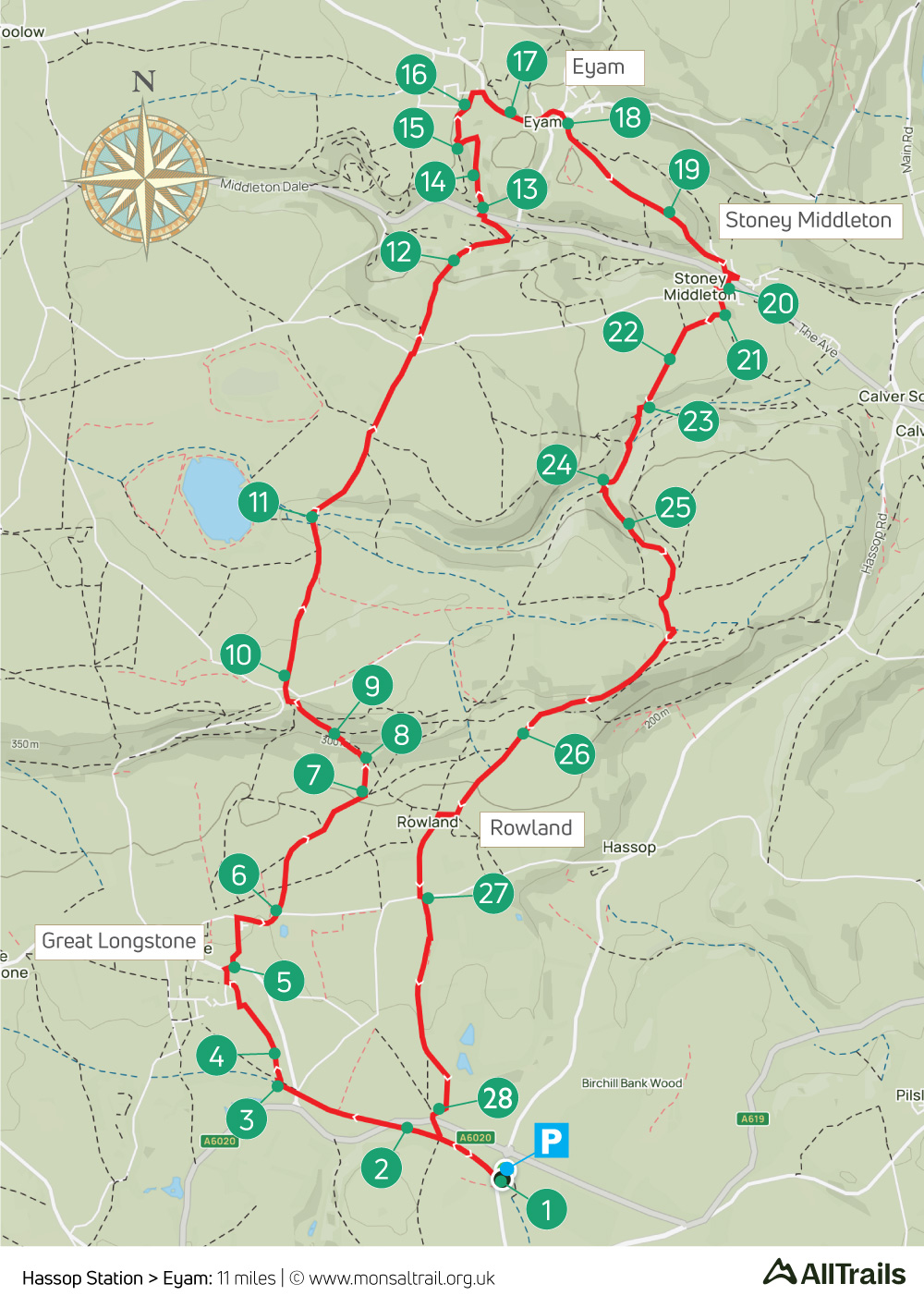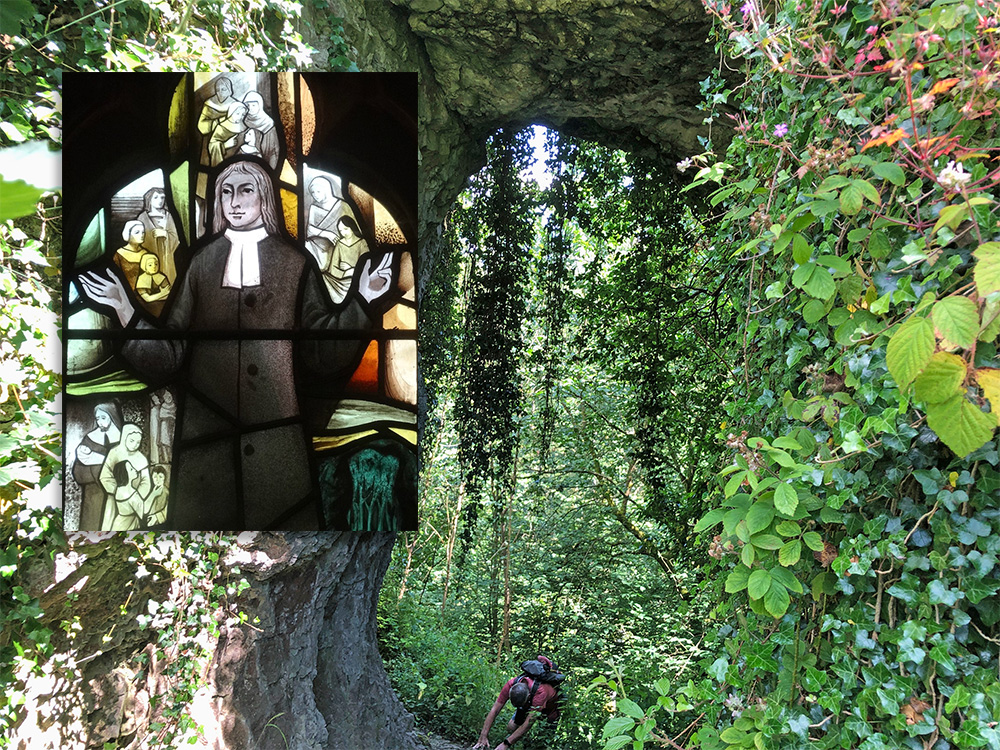Above: Plaques by a row of cottages tell the tragic story of how the Black Death came to this tranquil village. George Viccars was the first victim. It’s thought he brought the disease to Eyam in a bundle of cloth which carried infected fleas.
At 11 miles, this circular walk from Hassop Station to Eyam is one of the longest in the series, and also one of the most challenging – particularly the route through Eyam Delph Nature Reserve up to Cucklet Church. But it’s a walk full of historical interest, scenic paths and glorious views.
From the Monsal Trail, the route passes Great Longstone before heading over Longstone Moor via Hardrake Lane, an ancient trackway used by miners transporting lead from one of the many mines which once dotted this landscape.
Highwayman Black Harry
The route then drops down along attractive field paths to the junction of Black Harry Lane and Coombs Dale. It was here that the notorious 18th century highwayman, Black Harry, lay in wait to prey on vulnerable travellers and merchants. Harry ended up swinging on the gibbet at Peters Stone (see Litton to Cressbrook walk).
The walk continues ahead, along Black Harry Lane, but it is possible to shorten the route to around seven miles by turning right here along Coombs Dale; a narrow, hard-surfaced track through this picturesque valley.
The route passes Darlton Quarry where a train was spectacularly run over the edge for a scene in Tom Cruises’s Mission Impossible series. And then heads up Eyam Delph Nature Reserve to reach Cucklet Church.
Above: Cucklet Church is a series of natural arches in the limestone, just outside Eyam, where William Mompesson preached during the Black Death outbreak in 1665-6. The inset image of Mompesson is part of a stained glass window in Eyam Church.
The path up through the nature reserve can be quite difficult as it gets very muddy in winter and after rain. But the only alternative route to Eyam is along the narrow road, and there’s no pavement for most of the way.
The route enters Eyam opposite Eyam Hall’s Courtyard which has a bar, cafe and shop, with lots of outside tables to rest awhile and enjoy some refreshments.
History of the ‘Plague Village’
The nearby museum is well worth a visit, but opening times can vary. The museum’s website provides a harrowing description of the devestation caused by the disease – brought by infected fleas in a bundle of cloth – and explains how Mompesson managed to persuade the villagers to isolate once the plague had started to spread.
The path then passes Eyam Church, which also has displays about the plague years. Near the porch lies the grave of Mompesson’s wife, Catherine, who paid the ultimate price for staying with her husband.
From Eyam, the walk passes the famous Boundary Stone – where villagers left coins soaking in vinegar-filled holes for food and essential supplies – before returning along some wonderful paths and tracks through Stoney Middleton and Rowland.
Click below for full step-by-step instructions and photos.
A ‘Relive’ version of the walk. Click to play and use the expand option to view in full-screen. Click here for more Monsal Trail ‘Relives’.



